Friends John and Joan traveled up from Norfolk to assist with the new rudder installation. John is a certified diver and came prepared to dive if necessary, but Dave was trying to avoid that since the water temperature was in the low 40's! Dave and John have an over-under barter arrangement. John dives on Pas de Deux and Dave goes up Alize's mast.
Dave had spent quite some time with his engineer mind coming up with a manner for installing the rudders with the boat in the water without having to ask John to dive
. Back in December when we removed the bare starboard stock and port rudder, Dave simply attached a messenger line to the top of the stocks and dropped/pushed the stocks out the bottom. It was his aim to now attempt this in reverse.
After we lost a rudder last autumn while sailing the Potomac River, Dave had to research fabricators who could produce a replacement (we would actually replace both rudders). After determining both that an identical Catana 471 replacement rudder from outside the U.S. and Canada would be quite expensive and that no one in the US/Canada had existing molds for Catana rudders, he researched about a half dozen suppliers/fabricators who could either make a mold from the intact port rudder, or provide a suitable rudder from an existing other-boat mold. Several of these fabricators would gladly make new molds from the port blade Dave could provide, but this drove up the price substantially. On the recommendation of another Catana owner, and at reasonable cost, Dave contracted with the Foss Company/FinCo to use an other-boat mold whose performance the other Catana owner had been pleased with
.
Dave sent the bare stock and his intact port rudder/stock to FinCo back in December. Through discussions with them he settled on what would be a trimmed variation of an existing mold. After remedying some "glitches" in fabrication involving the placement of the blade in the correct position on the stock, the new rudders were shipped in early February (crated like museum pieces!). They were sanded and ready for bottom paint. The gel coat work was gorgeous. Very nice craftsmanship. One could argue that instead of hanging from the bottom of a boat they should be hanging on the wall as an art form. The leading and trailing edges were finer than the OEM blades and overall they looked very, very nice. To Dave, they screamed "fast".
At this point, Dave's greatest concern was whether the dimensions differed significantly enough to make the tops of the blades foul the hulls. We wouldn't know until we attempted installation, which would be challenging enough with the boat in the water. Dave came prepared to modify the thickness of the bearings involved to eliminate any problem we might encounter in this regard
. Dave had painted the rudders at home in the garage, with them hanging from the automatic garage door rails (see a previous entry).
Dave's wishing now he had a few more witnesses to this unlikely achievement of installing the rudders with the boat in the water, without having to physically enter the water. We ran a messenger line from the engine rooms through the stock casings and tied them to a threaded bolt in the top of the stocks. We weighted the bottom of the rudders by standing them in a large bucket of rocks and metal weights from home, then secured the bucket with a loop over the top of the blade in a notch behind the stock. The goal was to get the rudder/stock to sink vertically, stock pointed up, by overcoming the buoyancy of the blades so it could be pulled into the hull with the messenger line. We tied the bucket such that it could be remotely released from the rudder by pulling on a "trip line" - sheet bend with a loop like tying your shoe - only with a very long tail.
Because the boat was docked starboard side to, we started on the easy side, working from the dock
. We lowered the whole contraption next to the boat on a line threaded in a big loop, but not tied, through a hole near the top of the stock for attaching the steering quadrant. (Dave had to guess at how many rocks it would take to compensate for the buoyant rudder blades but we hit neutral buoyancy almost exactly - just heavy enough to sink the blades down with the stock up as if we were handling just the stock by itself.)
With the rudder and stock suspended vertically in the water next to the boat we gradually transferred the load from the looped line over to the messenger line, allowing the rudder and rocks to move and hang below the hull, stock up.
When the load was fully on the messenger line, we removed the second line and pulled it out of its hole in the stock. Then we just pulled the top of the stock into the hull with the messenger line.
When the stock was partly in the casing, we yanked the trip line freeing the bucket of rocks and retrieved it, allowing the stock to "float" fully into the casing. It took a little finagling to get it through the smaller diameter top bearing. The rudder was then "floating" up against the hull and ready to be connected.
We repeated all this on the port side, this time working only from the transom. For each one we turned the rudder by hand to see if it fouled the hull. They both turned freely. Time for a few beers....
Installing the New Rudders
Saturday, March 21, 2009
 Vera's White Sands Beach Club and Marina, Maryland, United States
Vera's White Sands Beach Club and Marina, Maryland, United States
Other Entries
-
84Sail from Smith Creek to Cockrell's
Oct 20152 days prior Cockrell's Marine Railway, United Statesphoto_camera1videocam 0comment 0
Cockrell's Marine Railway, United Statesphoto_camera1videocam 0comment 0 -
85Sail to Mill Creek off the Great Wicomico
Oct 31141 days prior Mill Creek Great Wicomico River, United Statesphoto_camera8videocam 0comment 0
Mill Creek Great Wicomico River, United Statesphoto_camera8videocam 0comment 0 -
86A Multi-Directional Run Past Tangier to Crisfield
Nov 01140 days prior Crisfield, United Statesphoto_camera1videocam 0comment 0
Crisfield, United Statesphoto_camera1videocam 0comment 0 -
87One Route to Cockrell's From Crisfield
Nov 02139 days prior Cockrell's Marine Railway, United Statesphoto_camera2videocam 0comment 0
Cockrell's Marine Railway, United Statesphoto_camera2videocam 0comment 0 -
88A Season-Ending Week-Long Sail with Alize
Nov 07134 days prior Mill Creek Great Wicomico River, United Statesphoto_camera1videocam 0comment 0
Mill Creek Great Wicomico River, United Statesphoto_camera1videocam 0comment 0 -
89Rendezvous at Smith Creek
Nov 08133 days prior Smith Creek, United Statesphoto_camera6videocam 0comment 0
Smith Creek, United Statesphoto_camera6videocam 0comment 0 -
90Sail to Fishing Creek Little Choptank River MD
Nov 09132 days prior Fishing Creek Little Choptank River, United Statesphoto_camera1videocam 0comment 0
Fishing Creek Little Choptank River, United Statesphoto_camera1videocam 0comment 0 -
91Sail to San Domingo Creek near St Michaels MD
Nov 10131 days prior San Domingo Creek St Michaels, United Statesphoto_camera0videocam 0comment 0
San Domingo Creek St Michaels, United Statesphoto_camera0videocam 0comment 0 -
92Sail to Dividing Creek Wye East River
Nov 11130 days prior Dividing Creek Wye East River, United Statesphoto_camera7videocam 1comment 0
Dividing Creek Wye East River, United Statesphoto_camera7videocam 1comment 0 -
93Sail to Dun Cove off Harris Creek Choptank River
Nov 12129 days prior Dun Cove Harris Creek Choptank River, United Statesphoto_camera4videocam 0comment 0
Dun Cove Harris Creek Choptank River, United Statesphoto_camera4videocam 0comment 0 -
94Motoring to La Trappe Creek Choptank River
Nov 13128 days prior La Trappe Creek Choptank River, United Statesphoto_camera4videocam 0comment 0
La Trappe Creek Choptank River, United Statesphoto_camera4videocam 0comment 0 -
95Final Sailing Day of the 2008 Season
Nov 14127 days prior Vera's White Sands Beach Club and Marina, United Statesphoto_camera4videocam 0comment 0
Vera's White Sands Beach Club and Marina, United Statesphoto_camera4videocam 0comment 0 -
96Season's Greetings!
Dec 2586 days prior Vera's White Sands Beach Club and Marina, United Statesphoto_camera1videocam 1comment 0
Vera's White Sands Beach Club and Marina, United Statesphoto_camera1videocam 1comment 0 -
97Video***Year 2008 on the Chesapeake Bay
Dec 3180 days prior Vera's White Sands Beach Club and Marina, United Statesphoto_camera1videocam 1comment 0
Vera's White Sands Beach Club and Marina, United Statesphoto_camera1videocam 1comment 0 -
98Preparations for the New Year
Jan 0179 days prior Vera's White Sands Beach Club and Marina, United Statesphoto_camera1videocam 0comment 0
Vera's White Sands Beach Club and Marina, United Statesphoto_camera1videocam 0comment 0 -
99Spring Has Sprung!
Mar 0813 days prior Vera's White Sands Beach Club and Marina, United Statesphoto_camera6videocam 0comment 0
Vera's White Sands Beach Club and Marina, United Statesphoto_camera6videocam 0comment 0 -
100Putting Things Back Together
Mar 183 days prior Vera's White Sands Beach Club and Marina, United Statesphoto_camera0videocam 0comment 0
Vera's White Sands Beach Club and Marina, United Statesphoto_camera0videocam 0comment 0 -
101Installing the New Rudders
Mar 21 Vera's White Sands Beach Club and Marina, United Statesphoto_camera7videocam 0comment 0
Vera's White Sands Beach Club and Marina, United Statesphoto_camera7videocam 0comment 0 -
102Preparations for our First Sail of the Season
Mar 232 days later Vera's White Sands Beach Club and Marina, United Statesphoto_camera2videocam 0comment 0
Vera's White Sands Beach Club and Marina, United Statesphoto_camera2videocam 0comment 0 -
103Final Preparations for Transit to Annapolis
Mar 254 days later Vera's White Sands Beach Club and Marina, United Statesphoto_camera0videocam 0comment 0
Vera's White Sands Beach Club and Marina, United Statesphoto_camera0videocam 0comment 0 -
104Transit to Annapolis
Mar 309 days later Annapolis, United Statesphoto_camera0videocam 0comment 0
Annapolis, United Statesphoto_camera0videocam 0comment 0 -
105Recap of our Spring 2009 Refit
Apr 2838 days later Annapolis, United Statesphoto_camera9videocam 0comment 0
Annapolis, United Statesphoto_camera9videocam 0comment 0 -
106Transit from Annapolis to Norfolk
Apr 3040 days later Norfolk, United Statesphoto_camera4videocam 0comment 0
Norfolk, United Statesphoto_camera4videocam 0comment 0 -
107A Busy Summer in Norfolk
Aug 01133 days later Norfolk, United Statesphoto_camera12videocam 0comment 0
Norfolk, United Statesphoto_camera12videocam 0comment 0 -
108Vacationing with Alize
Sep 12175 days later Norfolk, United Statesphoto_camera0videocam 0comment 0
Norfolk, United Statesphoto_camera0videocam 0comment 0 -
109September Sailing Amidst Chores
Sep 30193 days later Norfolk, United Statesphoto_camera0videocam 0comment 0
Norfolk, United Statesphoto_camera0videocam 0comment 0 -
110October Cruising
Oct 31224 days later Norfolk, United Statesphoto_camera0videocam 0comment 0
Norfolk, United Statesphoto_camera0videocam 0comment 0 -
111Passage to the Bahamas: Anticipation
Nov 04228 days later Norfolk, United Statesphoto_camera0videocam 0comment 0
Norfolk, United Statesphoto_camera0videocam 0comment 0 -
112Passage to the Bahamas: Under Way
Nov 08232 days later Spanish Wells, Bahamasphoto_camera3videocam 1comment 0
Spanish Wells, Bahamasphoto_camera3videocam 1comment 0 -
113Arrival at Spanish Wells, Eleuthera
Nov 09233 days later Spanish Wells, Bahamasphoto_camera1videocam 0comment 0
Spanish Wells, Bahamasphoto_camera1videocam 0comment 0 -
114Traveling Onward - The First Month
Dec 12266 days later George Town, Bahamasphoto_camera21videocam 0comment 0
George Town, Bahamasphoto_camera21videocam 0comment 0 -
115Our Journey Southward Continues
Jan 10295 days later Clarence Town, Bahamasphoto_camera4videocam 0comment 0
Clarence Town, Bahamasphoto_camera4videocam 0comment 0 -
116Overnight Passage to Turks & Caicos Islands
Jan 14299 days later Sapodilla Bay, Turks and Caicosphoto_camera1videocam 0comment 0
Sapodilla Bay, Turks and Caicosphoto_camera1videocam 0comment 0 -
117Visit to the Northern Shore of Providenciales
Jan 24309 days later Providenciales, Turks and Caicosphoto_camera15videocam 0comment 0
Providenciales, Turks and Caicosphoto_camera15videocam 0comment 0 -
118Journey Southward to the Turks Islands
Feb 04320 days later Big Sand Cay, Turks and Caicosphoto_camera16videocam 1comment 0
Big Sand Cay, Turks and Caicosphoto_camera16videocam 1comment 0 -
119Passage Making Northbound to the Ragged Islands an
Feb 23339 days later Flamingo Cay, Bahamasphoto_camera6videocam 0comment 0
Flamingo Cay, Bahamasphoto_camera6videocam 0comment 0

 Vera's White Sands Beach Club and Marina, Maryland, United States
Vera's White Sands Beach Club and Marina, Maryland, United States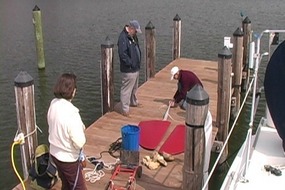
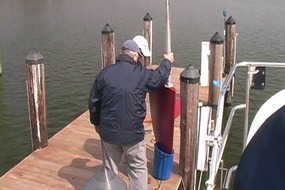
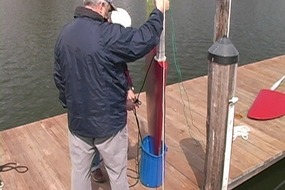
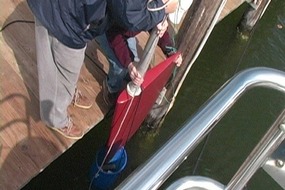



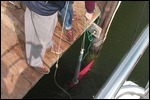
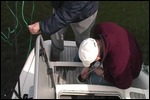
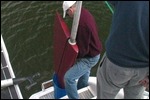
2025-05-23